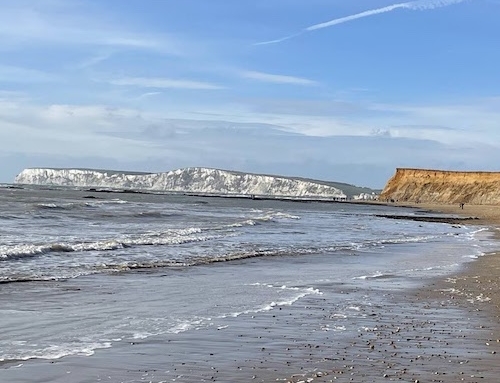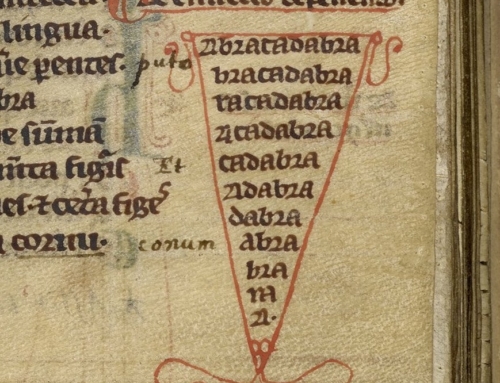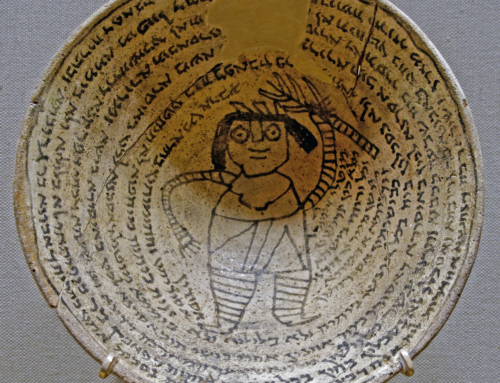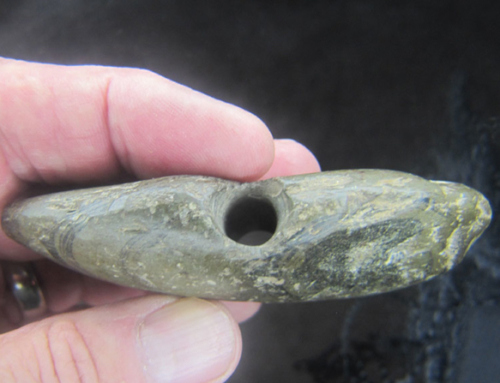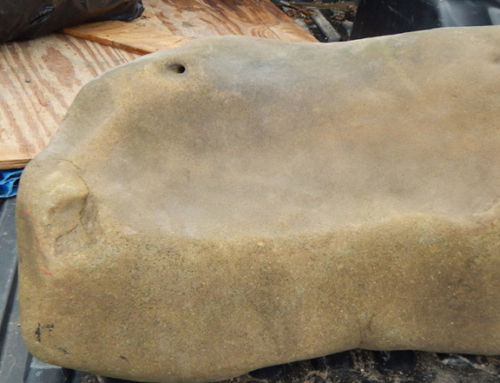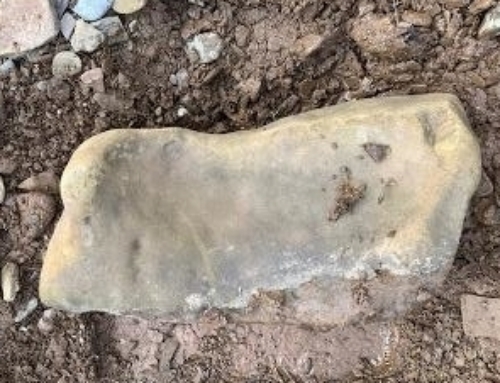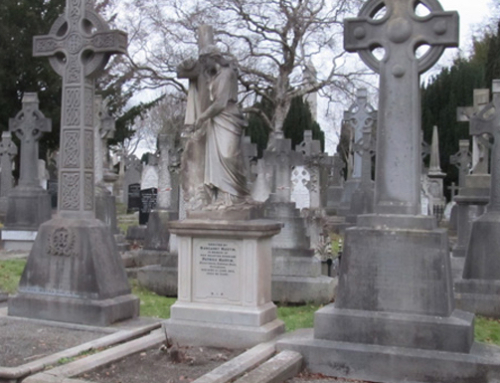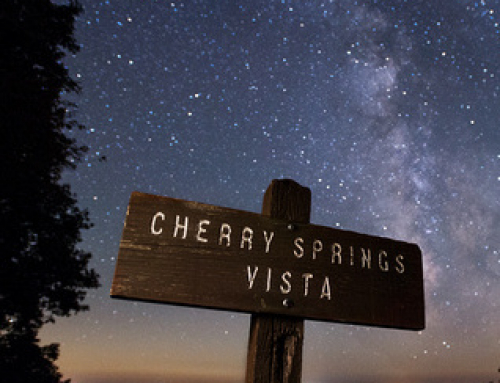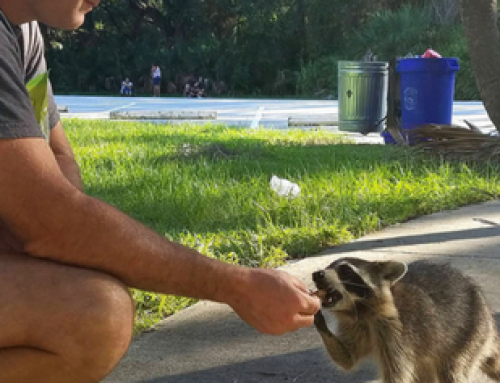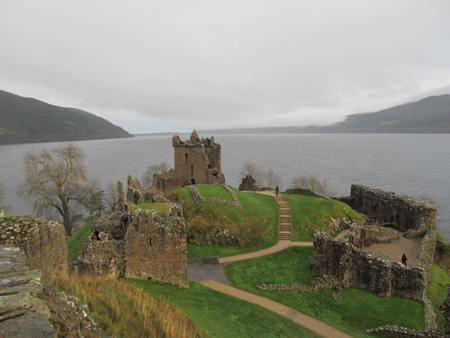
Urquhart Castle on Loch Ness
I thwarted my husband’s vacation plans. Days before he purchased tickets for a Caribbean cruise, I suggested Scotland.
In the blink of an eye, I wasted months he spent researching itineraries. Gone were his plans to lounge poolside on the lido deck, dine on all-he-could-eat buffets and enjoy nightly live entertainment aboard a floating mega-mall.
He tossed them aside in an instant when I pointed out Scotland has spooky ruins, damp castles, and foggy moors. We’re passionate about history and figure we can cruise when we’re old. Besides, who wants to spend December snorkeling in warm, tropical waters when they can stand beside the frigid waters of Loch Ness, which is close in latitude to Juneau, Alaska?
It’s been a dream come true, traveling abroad to ancient cities and world capitals, and we’ve added Rome, London, and Dublin to our scrapbook.
There’s one vacation I would like to take, but he may not agree as readily to this idea.
As an American Archaeologist, my experience in the field abroad is non-existent. I’ve peeked at archaeological sites during my travels and admired the results of antiquities research in various museums, but I’ve never had the opportunity to dig overseas.
I think my husband may pull out the cruise ship brochures when I tell him I’m looking at archaeological vacation packages. He doesn’t care to get dirty unless it’s in his own garden.
What most people don’t realize about archaeological vacations is the work you’ll do is a service to all humanity. When you contribute to an archaeological dig, as either a shovel bum or a lab rat, you are a “Steward of the Past.” You help conserve heritage for future generations.
Without the help of volunteers, most archaeological sites wouldn’t get dug, either. Although there’s a lot of interest in prehistoric and historic sites, there’s not a lot of money for excavation and preservation.
One way museums offset the expense of archaeological research is to team up with volunteer vacation groups. It’s a win-win situation, since the volunteer not only gets to visit exotic locations, they get to play Indiana Jones.
And is it fun? Heck yeah!
Anthropologist Kent Flannery once wrote: “… archaeology is still the most fun you can have with your pants on.”
As an archaeologist, I’ve met hundreds of people who want to spend an hour, a day, a week, even a month working on my digs. Entire families have joined my projects, some flying across the continent to spend their vacations with me, squatting in the dirt, brushing soil from rusty nails, screening mud for artifacts. Others want to spend their time washing those artifacts and still others, identifying and cataloging them.
To this day, it amazes me that people will pay me to let them play in the dirt and lift heavy buckets. (Update: I no longer lift buckets. Turns out, they can cause hernias.)
It’s also fascinating that a person will excavate a piece of broken glass, then handle it with care given to expensive crystal. That same person probably walked by and ignored dozens of pieces of broken glass between the parking lot and the dig site.
So, what is the difference between litter and artifacts? Context.
Context makes material things important. We want to know, “What is it? Who made it? Where was it found?”
Context makes our memories important also. We want to remember, “Where did we go? What did we do? Who did we see?”
Because memories are important, my husband gallantly tossed aside our trip to the islands. Instead of dining from the trough on a cruise ship, we will have Christmas Lunch at Edinburgh Castle. We will board the Royal Yacht Britannia, walk the Royal Mile to Holyrood, tour Rosslyn Chapel, hike the ancient volcano of Arthur’s Seat and maybe pet a Hairy Coo (the long-haired cows of Scotland). We do have a short cruise planned; it’s just a smaller boat and we’ll be watching for the Loch Ness Monster. And with respect, we’ll visit the Battlefield of Culloden, where thousands of highlanders fought and died with brave hearts for their “Bonny Prince Charlie.
These are memories we’ll treasure, most of them thanks to the volunteers who helped to preserve them.
Since we can appreciate their efforts, next year, I’ll suggest we spare a few vacation days and work as volunteers at an archaeological site. Imagine being the person who discovered the golden horde now on display at the British Museum!
Perhaps you’ll consider a volunteer archaeological opportunity next time you’re making vacation plans. There are dozens available, from small historical society digs in local parks and pastures, to large university excavations at Roman ruins.
So why consider voluntourism?
Unlike college students enrolled in a field school and their instructors, volunteers on vacation can work at archaeology sites during the day, then skip the lectures. I know, roughing it in the field is supposed to be part of the charm of an archaeology dig, but I’m an older woman. I’m not interested in going to the bathroom behind a tree, sleeping on a cot, or eating dirt with my peanut butter sandwich. I want dinner at a five-star restaurant, 800-count Egyptian cotton sheets, air conditioning, a private bathroom, and wifi.
I want the selfish gratification of a vacation and the personal satisfaction of performing a good deed, and I can have both as a voluntourist.
So where do I want to go?
From an Iron Age hillfort in Scotland to an ancient pottery mound in Italy, from prehistoric villages in Mexico to underwater sites off the coast of Spain, opportunities are plentiful. There are dozens available, from small digs in parks or pastures, to large excavations at Roman ruins.
While perusing the Archaeological Institute of America website, I found an interesting project: a church site and graveyard survey in Ireland. There are a lot of interesting projects on the AIA’s Archaeological Fieldwork Opportunities Bulletin, and I like that I can sort them by geographic location.
Another resource is Earthwatch, although its expeditions aren’t limited to archaeology. This group offers paleontological digs as well as environmental projects working with elephants or dolphins.
I’ve also bookmarked Archeolink’s comprehensive website and plan to explore its numerous links to historic tours and volunteer opportunities.
Now how do I select only one? And, how do I convince my husband it’s a grand idea?
Ready for a Challenge?
Have even more fun when you accept the 21-Day Writing Sprint Challenge. This process is one I use every semester with my college students, so I know it can kickstart your creativity and introduce structure to your writing schedule. When you join my Circle of Writers & Authors, you’ll receive FREE writing resources, and you’ll sign up for my newsletter. I will not sell your information, or spam you. I will send you updates about new articles and podcasts I’ve created, and projects I’m working on. You can unsubscribe at anytime. Read my Privacy Policy here.
Wholehearted Author is for you if you are …
- Starting out as a writer and could use some guidance
- Wanting to be inspired to create and publish your book
- Looking for like-minded, happy people and helpful mentors
- Hoping to turn your writing into a full-time, awesome career
- New to the concept of “permission marketing” but willing to try
CATCH THE WEST WIND
Add WEST WIND to your library!
If you love a good mystery, a romantic whodunit that will surprise you, then WEST WIND is a great addition to your ebook library.
West Wind is my third novel as an author of Contemporary Fiction, Suspense, Thriller, and Romance. It’s FREE too, when you join my exclusive Readers Group. Join today and download your free book, and as a special thank you, you’ll receive a SECOND FREE BOOK tomorrow! The giving goes on and on when you become my fan.
When you join my Readers Group, you’ll receive updates about new projects I’m working on. You can unsubscribe at anytime. Read my Privacy Policy here.





